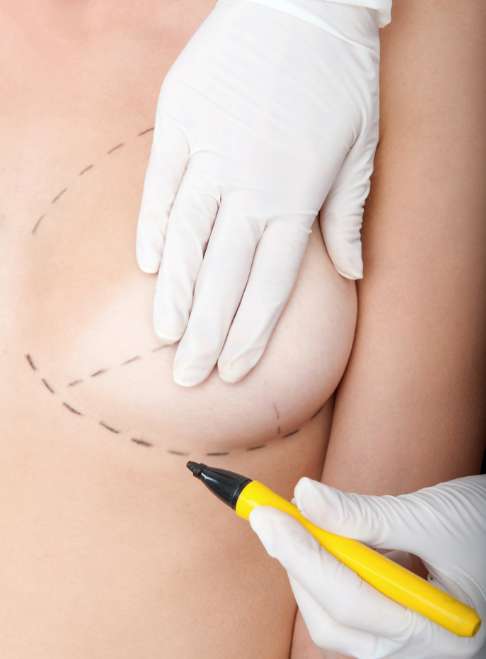Breast
Reconstruction
Reconstruction Process
Reconstruction of the breast after mastectomy or lumpectomy surgery is possible through a combination of plastic surgery techniques and can dramatically improve a woman’s self-image and quality of life.
The results of breast reconstruction can be relatively natural in appearance, though the reconstructed breast may never look or feel exactly the same as the breast a woman had prior to mastectomy.
Breast reconstruction can be performed months or even years after a woman has already undergone mastectomy. This is known as delayed reconstruction. But in many cases the process of breast reconstruction can be started at the time of mastectomy. This is known as immediate reconstruction.
Whether a woman has immediate or delayed reconstruction, it is important to understand that the entire process from start to finish can take a year or longer to complete. This is because breast reconstruction is usually performed in stages.
The process of breast reconstruction begins with the creation of the breast mound. The three main types of breast reconstructive procedures include tissue expansion, TRAM Flap, and Latissimus Flap reconstruction.
Staged reconstruction with tissue expansion prior to placement of permanent breast implants is the most common type of breast reconstruction method. Tissue expansion involves the placement of a tissue expander device under the pectoralis muscle of the chest. This is often done in conjunction with the use of a piece of acellular dermal matrix (Alloderm, Stratice, Flex HD, or Dermamatrix.) The acellular dermal matrix is used as a sling for support to help keep the expander device placed in proper position under the pectoral muscle. Over a period of several months, the expander is filled with sterile saline during visits at the office. Once the expansion is completed, the expander is removed and a breast implant is placed.


TRAM Flap Procedure
TRAM Flap (Transverse Rectus Abdominus Myocutaneous Flap) is an autologous form of breast reconstruction that involves the use of a woman’s abdominal skin and fat to reconstruct the breast.
The skin and fat used come from the lower abdominal region, similar to the area removed in a tummy tuck procedure. Generally, so long as a woman has sufficient tissue in the area, the entire breast can be reconstructed without the use of a prosthetic implant.
The main difference between TRAM Flap surgery and a tummy tuck procedure is that the rectus abdominus muscle is taken as part of the TRAM Flap and serves as the blood supply that nourishes the tissue. Often the site where the muscle is removed from is reconstructed with a piece of prosthetic mesh or porcine acellular dermal matrix. As a result of the muscle loss, there is expected to be some weakness of the abdominal wall.
This is not a procedure that is recommended for women who have a very active, athletic lifestyle. Rather, it is a useful procedure for reconstruction in women who have had radial types of mastectomy surgery or radiotherapy, and who have more of a sedentary lifestyle. This surgery does carry a small risk for abdominal hernia.
Latissumus Flap Procedure
Latissumus Flap surgery involves the use of the Latissimus Dorsi Muscle and in some cases an overlying paddle of skin, which is tunneled under the axillary region and brought onto the front of the chest. Occasionally the flap can reconstruct the entire breast mound. But in most cases, either a tissue expander or a breast implant is placed under the flap to reconstruct a complete breast mound.
In stages after the breast mound has been reconstructed, the nipple and areolar complex are created through use of small skin flaps and/or skin grafting techniques. Once healed, these are later tattooed to give the proper color. Additionally, some women will have surgery performed on the opposite breast to provide symmetry, such as breast reduction, breast lift, or breast augmentation.
In some cases wherein patients are having nipple sparring mastectomy surgery, it may be possible to avoid tissue expansion and perform immediate reconstruction with a saline or silicone gel filled breast implant in conjunction with the use of acellular dermal matrix. This is commonly known as “direct to implant” breast reconstruction. Qualifying candidates usually have very early stage tumors without lymph node involvement and small to moderate sized breasts without a significant degree of mammary ptosis (droop).
In our practice, use of autologous fat grafting is very common for contouring the reconstructed breast mound. We offer both saline and silicone gel breast implants, as well as the newly FDA approved, anatomically shaped cohesive silicone gel breast prostheses.






